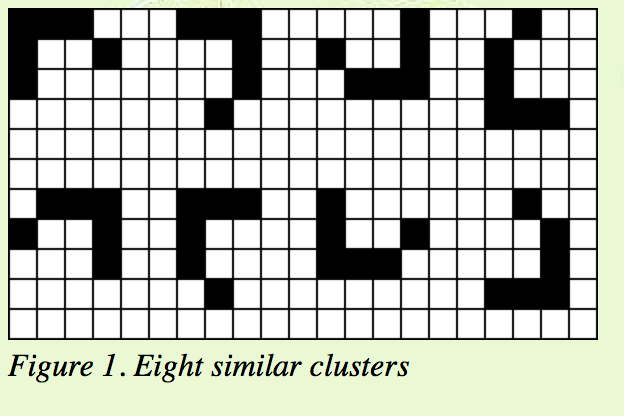High up in the night sky, the shining stars appear in clusters of various shapes. A cluster is a non-empty group of neighbouring stars, adjacent in horizontal, vertical or diagonal direction. A cluster cannot be a part of a larger cluster.
Clusters may be similar. Two clusters are similar if they have the same shape and number of stars, irrespective of their orientation. In general, the number of possible orientations for a cluster is eight, as Figure 1 exemplifies.

Figure 1. Eight similar clusters
The night sky is represented by a sky map, which is a two-dimensional matrix of 0's and 1's. A cell contains the digit 1 if it has a star, and the digit 0 otherwise.
Given a sky map, mark all the clusters with lower case letters. Similar clusters must be marked with the same letter; non-similar clusters must be marked with different letters.
You mark a cluster with a lower case letter by replacing every 1 in the cluster by that lower case letter.

